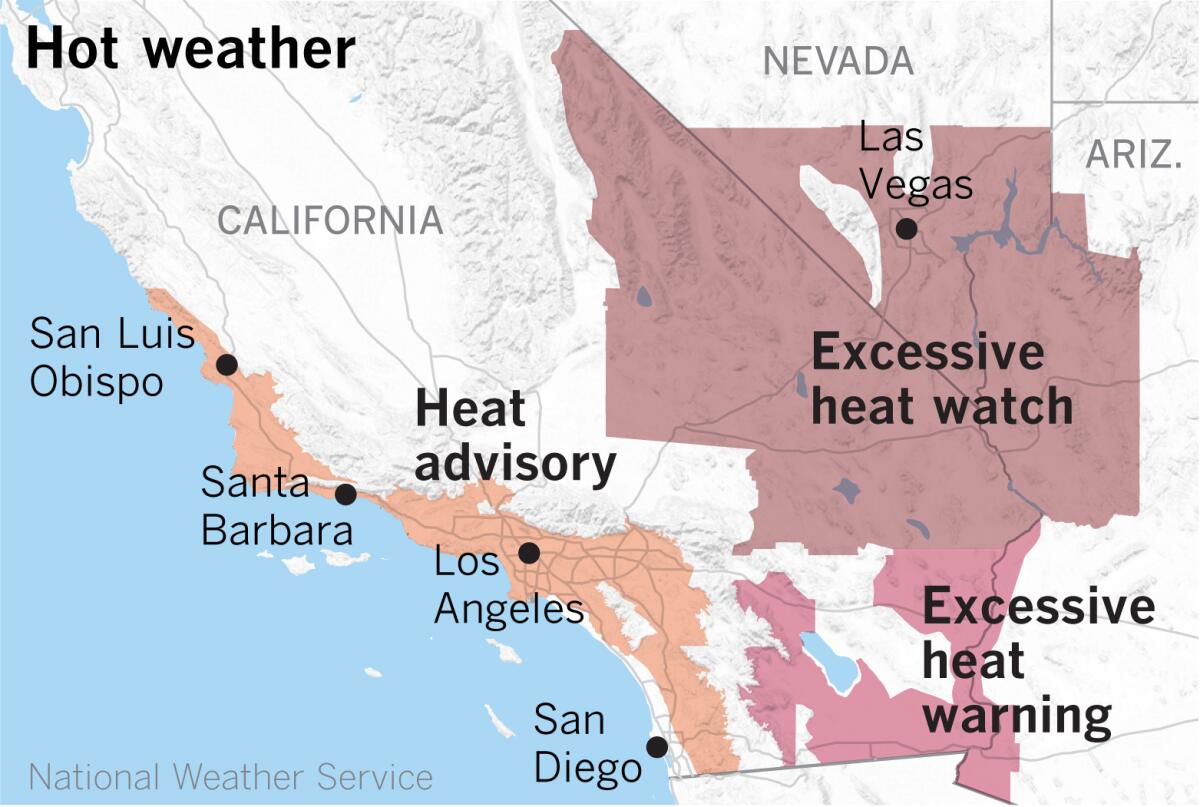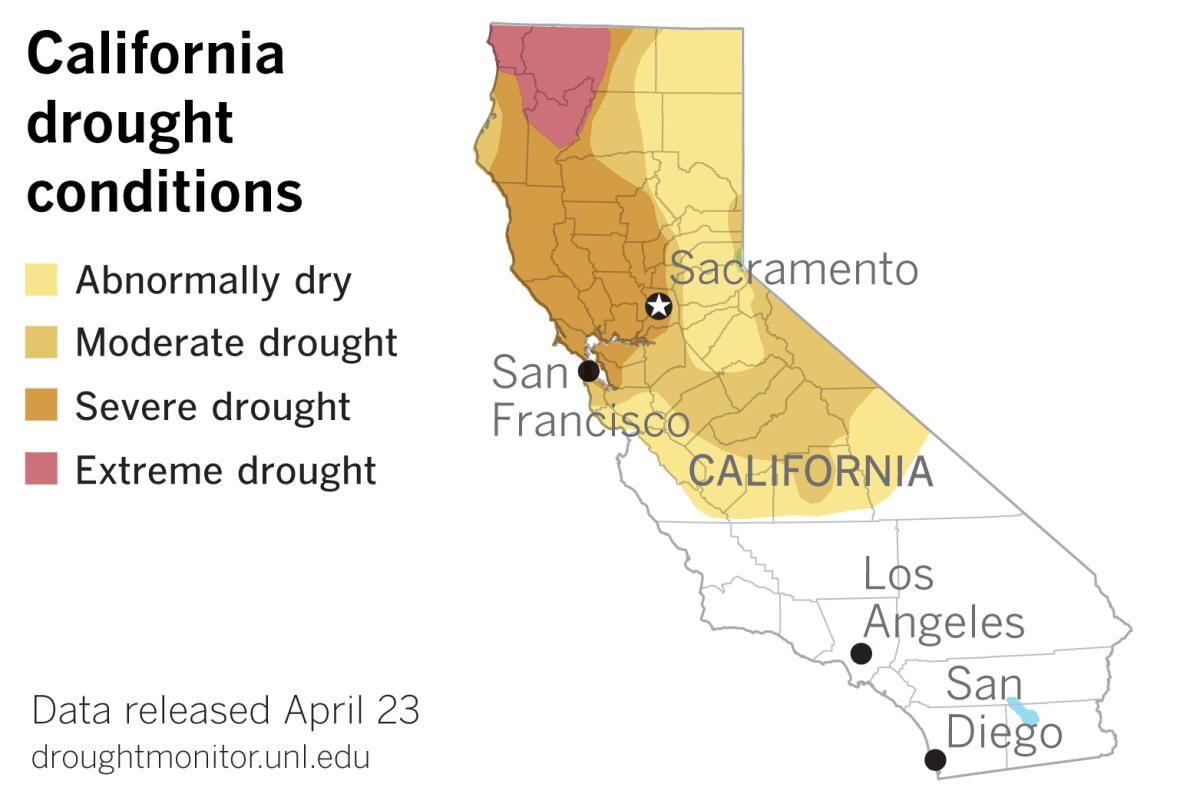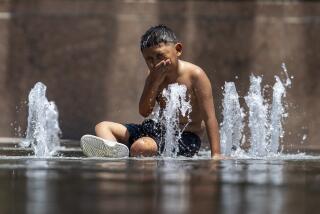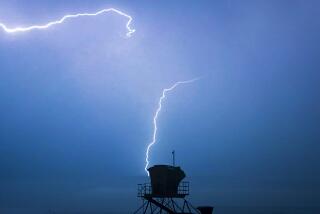Southern California swelters as drought intensifies in Northern California

- Share via
Temperatures will remain above seasonal norms in Southern California on Saturday as offshore gradients relax. A return of onshore flow will result in slight cooling at the coast and in coastal valleys, but interior areas will be slightly warmer.
The ridge of high pressure will weaken, bringing some cooling Sunday and Monday under mostly clear skies.
Heat advisories will remain in effect along portions of the coast and some inland areas through 6 p.m. Saturday. Excessive heat warnings are in effect for inland parts of San Diego, Riverside and Imperial counties, and an excessive heat watch is set take effect for much of the Mojave Desert from Tuesday through Thursday.

Southern California quickly made a transition from widespread and beneficial rainfall to summer-like heat, but rains were meager in Northern California, where exceptionally dry weather continues. The most recent U.S. Drought Monitor data, released Thursday, show that the arrow-straight northern boundaries of San Luis Obispo, Kern and San Bernardino counties form a dividing line between portions of the state that are drought-free — for the time being — to the south, and those counties under varying degrees of drought to the north.
The Drought Monitor also shows that areas of severe drought now sag southward and include the San Francisco Bay Area and the Sacramento Valley southward to the Sacramento-San Joaquin Delta. In addition, an area of extreme drought has appeared farther to the north, stretching from Del Norte and Siskiyou counties southward deep into Trinity County.
The severe and extreme drought conditions in Northern California portend an earlier start to the fire season. The National Interagency Fire Center is predicting above-normal wildland fire potential in large parts of Northern California by July.
Southern California has had the advantage of abundant late-season rain with cool temperatures, so an early start to the fire season isn’t as likely. But spring heat waves like the one currently underway in the region can have a hand in reversing that advantage.
More to Read
Sign up for Essential California
The most important California stories and recommendations in your inbox every morning.
You may occasionally receive promotional content from the Los Angeles Times.










